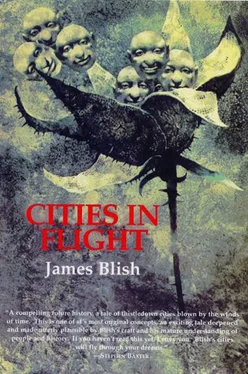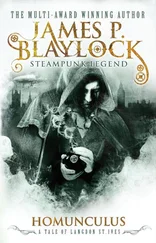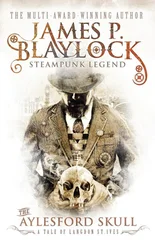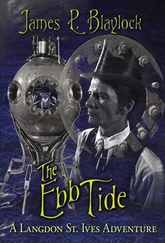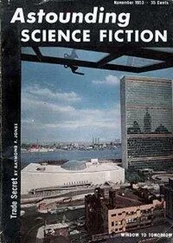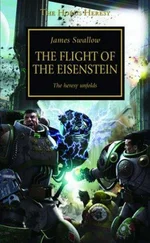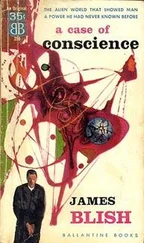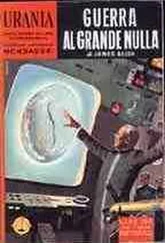James Blish - Cities in Flight
Здесь есть возможность читать онлайн «James Blish - Cities in Flight» весь текст электронной книги совершенно бесплатно (целиком полную версию без сокращений). В некоторых случаях можно слушать аудио, скачать через торрент в формате fb2 и присутствует краткое содержание. Жанр: Фантастика и фэнтези, на английском языке. Описание произведения, (предисловие) а так же отзывы посетителей доступны на портале библиотеки ЛибКат.
- Название:Cities in Flight
- Автор:
- Жанр:
- Год:неизвестен
- ISBN:нет данных
- Рейтинг книги:4 / 5. Голосов: 1
-
Избранное:Добавить в избранное
- Отзывы:
-
Ваша оценка:
- 80
- 1
- 2
- 3
- 4
- 5
Cities in Flight: краткое содержание, описание и аннотация
Предлагаем к чтению аннотацию, описание, краткое содержание или предисловие (зависит от того, что написал сам автор книги «Cities in Flight»). Если вы не нашли необходимую информацию о книге — напишите в комментариях, мы постараемся отыскать её.
Cities in Flight — читать онлайн бесплатно полную книгу (весь текст) целиком
Ниже представлен текст книги, разбитый по страницам. Система сохранения места последней прочитанной страницы, позволяет с удобством читать онлайн бесплатно книгу «Cities in Flight», без необходимости каждый раз заново искать на чём Вы остановились. Поставьте закладку, и сможете в любой момент перейти на страницу, на которой закончили чтение.
Интервал:
Закладка:
Pretty good going for a “crackpot” notion, though.
After that, the Bridge was inevitable. As soon as it became clear that we could perform the necessary tests only on the surface of Jupiter itself, we had to have the Bridge. It also became clear that the Bridge would have to be a dynamic structure. It couldn’t be built to a certain size and stopped there. The moment it was stopped, Jupiter would tear it to shreds. We had to build it to grow—to do more than just resist Jupiter—to push back against Jupiter, instead. It’s double the size that it needed to be to test the Locke Derivation, now, and I still don’t know how much longer we’re going to have to keep it growing. Not long, I hope; the thing’s a monster already.
But Seppi, let me ask you this: Does the Bridge really fall under the interdict you uttered against the gigantic research projects? It’s gigantic, all right. But—is it gigantic on Jupiter? I say it isn’t. It’s peanuts. A piece of attic gadgetry and nothing more. And we couldn’t have performed the necessary experiments on any other planet.
Not all the wealth of Ormus or of Ind, or of all the world down the ages, could have paid for a Manhattan District scaled to Jupiter’s size.
In addition—though this was incidental—the apparent giganticism involved was a useful piece of misdirection. Elephantine research projects may be just about played out, but government budgetary agencies are used to them and think them normal. Getting the Joint Committee involved in one helped to revive the committeemen from their comatose state, as nothing else could have. It got us appropriations we never could have corralled otherwise, because people associate such projects with weapons research. And—forgive me, but there is a sort of science to politics too—it seemed to show graphically that I was not following the suspect advice of the suspect Dr. Corsi. I owed you that, though it’s hardly as large a payment as I would like to make.
But I don’t mean to talk about the politics of crackpot-mining here; only about the concrete results. You should be warned, too, that the method has its pitfalls.
You will know by now about the anti-agathic research, and what we got out of it. I talked to people who might know what the chances were, and got general agreement from them as to how we should proceed. This straight-line approach looked good to me from the beginning.
I set the Pfitzner people to work on it at once, since they already had that HWS appropriation for similar research, and HWS wouldn’t be alert enough to detect the moment when Pfitzner’s target changed from just plain old age to death itself. But we didn’t overlook the crackpots—and before long we found a real dilly.
This was a man named Lyons, who insisted that the standard Lansing hypothesis, which postulates the existence of an ageing-toxin, was exactly the opposite of the truth. (I go into this subject with a certain relish, because I suspect that you know as little about it as I do; it’s not often that I find myself in that situation. ) Instead, he said, what happens is that it’s the young mothers who pass on to their offspring some substance which makes them long-lived. Lansing’s notion that the old mothers were the ones who did the passing along, and that the substance passed along speeding up ageing, was unproven, Lyons said.
Well, that threw us into something of a spiral. Lansing’s Law—“Senescence begins when growth ends”—had been regarded as gospel in gerontology for decades. But Lyons had a good hypothetical case. He pointed out that, among other things, all of Lansing’s long-lived rotifers showed characteristics in common with polyploid individuals. In addition to being hardy and long-lived, they were of unusually large size, and they were less fertile than normal rotifers. Suppose that the substance which was passed along from one generation to another was a chromosome-doubler, like colchicine?
We put that question to Lansing’s only surviving student, a living crotchet named MacDougal. He wouldn’t hear of it; to him it was like questioning the Word of God. Besides, he said, if Lyons is right, how do you propose to test it? Rotifers are miscroscopic animals. Except for their eggs, their body cells are invisible even under the miscroscope. Technically speaking, in fact, they don’t seem to have any body-cells as adults—just a sort of generalized protoplasmic continuum in which the nuclei are scattered at random, rather like the Plasmodium of a slime-mold. It would be quite a few months of Sundays before we ever got a look at a rotifer chromosome.
Lyons thought he had an answer for that. He proposed to develop a technique of microtome preparation which would make, not one, but several different slices through a rotifer’s egg. With any sort of luck, he said, we might be able to extend the technique to rotifer spores, and maybe even to the adult critters.
We thought we ought to try it. Without telling Pfitzner about it, we gave Pearl River Labs that headache. We put Lyons himself in charge and assigned MacDougal to act as a consultant (which he did by sniping and scoffing every minute of the day, until not only Lyons, but everybody else in the plant hated him). It was awful. Rotifers, it turns out, are incredibly delicate animals, just about impossible to preserve after they’re dead, no matter what stage of their development you catch them in. Time and time again, Lyons came up with microscope slides which, he said, proved that the long-lived rotifers were at least triploid—three labeled chromosomes per body-cell instead of two—and maybe even tetraploid. Every other expert in the Pearl River plant looked at them, and saw nothing but a blur which might have been rotifer chromosomes, and might equally well have been a newspaper halftone of a grey cat walking over a fur rug in a thick fog. The comparative tests—producing polyploid rotifers and other critters with drugs like colchicine, and comparing them with the critters produced by Lansing’s and MacDougal’s classical breeding methods—were just as indecisive. Lyons finally decided that what he needed to prove his case was the world’s biggest and most expensive X-ray miscroscope, and right then we shut him down.
MacDougal had been right all the time. Lyons was a crackpot with a plausible line of chatter, enough of a technique at microdissection to compel respect, and a real and commendable eagerness to explore his idea right down to the bottom. MacDougal was a frozen-brained old man with far too much reverence for his teacher, a man far too ready to say that a respected notion was right because it was respected, and a man who had performed no actual experiments himself since his student days. But he had been right—purely intuitively—in predicting that Lyons’ inversion of Lansing’s Law would come to nothing. I gather that victory in the sciences doesn’t always go to the most personable man, any more than it does in any other field. I’m glad to know it; I’m always glad to find some small area of human endeavor which resists the con-man and the sales-talk.
When Pfitzner discovered ascomycin, we had HWS close Pearl River out entirely.
Negative results of this kind are valuable for scientists too, I’m told. How you will evaluate your proposed research method in the light of these two experiences is unknown to me; I can only tell you what I think I learned. I am convinced that we must be much slower, in the future, to ignore the fringe notion and the marginal theorist. One of the virtues of these crackpots—if that is what they are—is that they tend to cling to ideas which can be tested. That’s worth hanging on to, in a world where scientific ideas have become so abstract that even their originators can’t suggest ways to test them. Whoever Locke was, I suppose he hadn’t put a thousandth as much time into thinking about gravity as Blackett had; yet Blackett couldn’t suggest a way to test his equation, whereas the Locke Derivation was testable (on Jupiter) and turned out to be right. As for Lyons, his notion was wrong; but it too fell down because it failed the operational test, the very test it proposed to pass; until we performed that test, we had no real assessment of Lansing’s Law, which had been traveling for years on prestige because of the “impossibility” of weighing any contrary hypothesis. Lyons forced us to do that, and enlarged our knowledge.
Читать дальшеИнтервал:
Закладка:
Похожие книги на «Cities in Flight»
Представляем Вашему вниманию похожие книги на «Cities in Flight» списком для выбора. Мы отобрали схожую по названию и смыслу литературу в надежде предоставить читателям больше вариантов отыскать новые, интересные, ещё непрочитанные произведения.
Обсуждение, отзывы о книге «Cities in Flight» и просто собственные мнения читателей. Оставьте ваши комментарии, напишите, что Вы думаете о произведении, его смысле или главных героях. Укажите что конкретно понравилось, а что нет, и почему Вы так считаете.
